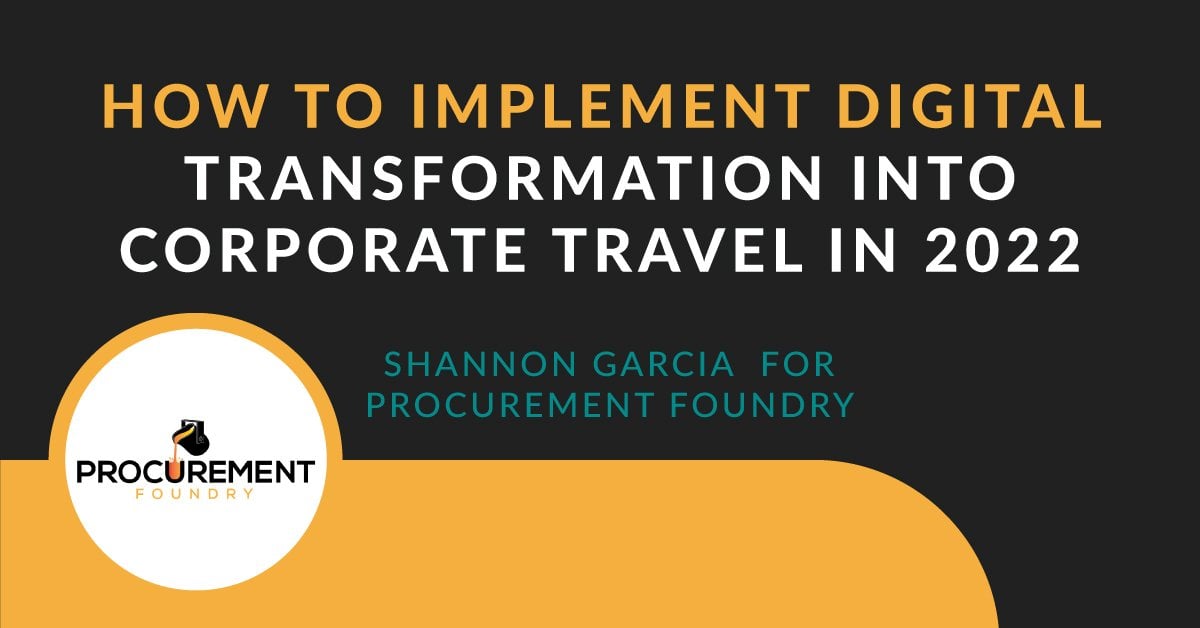Maximizing Savings Opportunities and Procurement's Strategic Value for CPOs
Saving money is not always about pinching pennies: advanced and data-driven insights enable you to identify real cost-saving opportunities, negotiate...
3 min read
![]() Shannon Garcia
:
2/21/22 12:00 AM
Shannon Garcia
:
2/21/22 12:00 AM

Even before COVID-19 began, corporate investment in digital transformation was a key business strategy. Two years into the pandemic, and digital transformation efforts have skyrocketed. Remote workforces with flexibility and agility have become a business imperative. Reaching increased profitability remains a priority, and to do this, organizations must bring new strategies and ideas while straddling new risks and imminent change.
Today’s most progressive leaders are prioritizing agility and ensuring their organizations are ready for their next phase by thinking, planning, and building digitally. Businesses must evolve to thrive, and digital transformation continues to change the way that business is done.
Although digital transformation brings many advantages to day-to-day business practices such as communication, information exchange, and collaboration, digital travel programs have difficulties adapting to these changes.
Digital transformation means applying modern technology to create new business processes that are easier and more convenient for users.
That means, users expect digital platforms to provide the same levels of user experience in travel that they receive in other parts of their lives. Corporate travel programs must evolve to the strategic business priorities around digitization. Corporate travel experiences must be quick, intuitive, and provide relevant information at the time of request.
To achieve this, digital transformation in corporate travel must focus on people, strategy, process, and technology.
If travelers are forced to use outdated technology, they won’t buy in. Even travel buyers express dissatisfaction with corporate travel booking tools. A 2019 poll illustrates that 73% of buyers say corporate travel booking tools are inferior to consumer booking tools.
Where do corporations even begin to dissect this dissatisfaction?
Start by conducting an end-to-end audit and flag all parts of the traveler experience where there might be friction. An end-to-end audit ensures avoidance of irrelevant options and illustrates problematic points of the traveler experience.
Next, ask travelers questions to discover additional pain points. Learn how they search for content and what their expectations are for travel technology. If there’s already a digital solution in place, make sure to weigh pros and cons before consolidating to a travel and expense (T&E) platform. Consolidated platforms can be clunky and outdated and cause travelers to go around corporate mandated travel programs.
There are currently more mobile users than desktop users worldwide, so ensuring your digital transformation efforts are mobile-first is critical. Put the correct solutions in the hands of travelers and they will become more effective and self-reliant. In turn, they will also be happier.
When organizations think strategically about getting the right tools in place, they have higher and more reliable productivity and a leaner, more effective travel program. Removing “we’ve always done it this way” thinking from the equation is important to driving meaningful and lasting change.
Through leading with technology and building the support structure around it, organizations better digitize and modernize their managed travel programs. Asses and involve the right change agents and stakeholders that can help drive digital transformation.
Many corporate travel managers are taking advantage of the current hiatus in travel to overhaul outdated corporate travel processes and technology. Now is a good time to assess and make changes.
Consider your level of confidence that you’re able to keep traveling employees engaged and safe. Examine whether your existing processes remove friction to help employees make better travel decisions. Other areas to revamp may include tracking client demand for in-person meetings, and accessing relevant data, such as the public health indicators at your travelers’ destinations.
The right technology is the keystone of digital transformation. People, process, and strategy are all important, but unless the right tools are provided digital transformation will fail.
At Deem, we spend a lot of time collecting data from travelers, and the data is astonishing. Employees are so frustrated with their organizations’ digital travel technology that they regularly go around their mandated programs
Best-in-class travel technology platforms provide the flexibility and agility organizations need for today’s corporate travel. A best-in-class platform should serve up useful content and meaningful capabilities such as:
Best-in-class platforms include capabilities that drive visibility into your travel program, prevent policy violations, and help you and your team make smarter decisions.
As employees leave their home offices and get back on the road, it is paramount that companies get the travel experience right. To do that, they need to undergo a digital transformation that encourages business leaders to define their travel technology strategy first and reimagine the experiences that will delight their travelers.
If you’d like help reimagining and implementing a new corporate strategy, contact Deem to learn more.
By Shannon Garcia, Vice President, Strategic Sales at Deem, Inc.

Saving money is not always about pinching pennies: advanced and data-driven insights enable you to identify real cost-saving opportunities, negotiate...

The topic of our recent roundtable discussion with a dozen Procurement Foundry community members—exploring potential flaws in procurement incentive...

Every 30 days or so, I get the same alert on my phone—“Your electricity bill is available for viewing.” I take a quick look, make sure nothing seems...